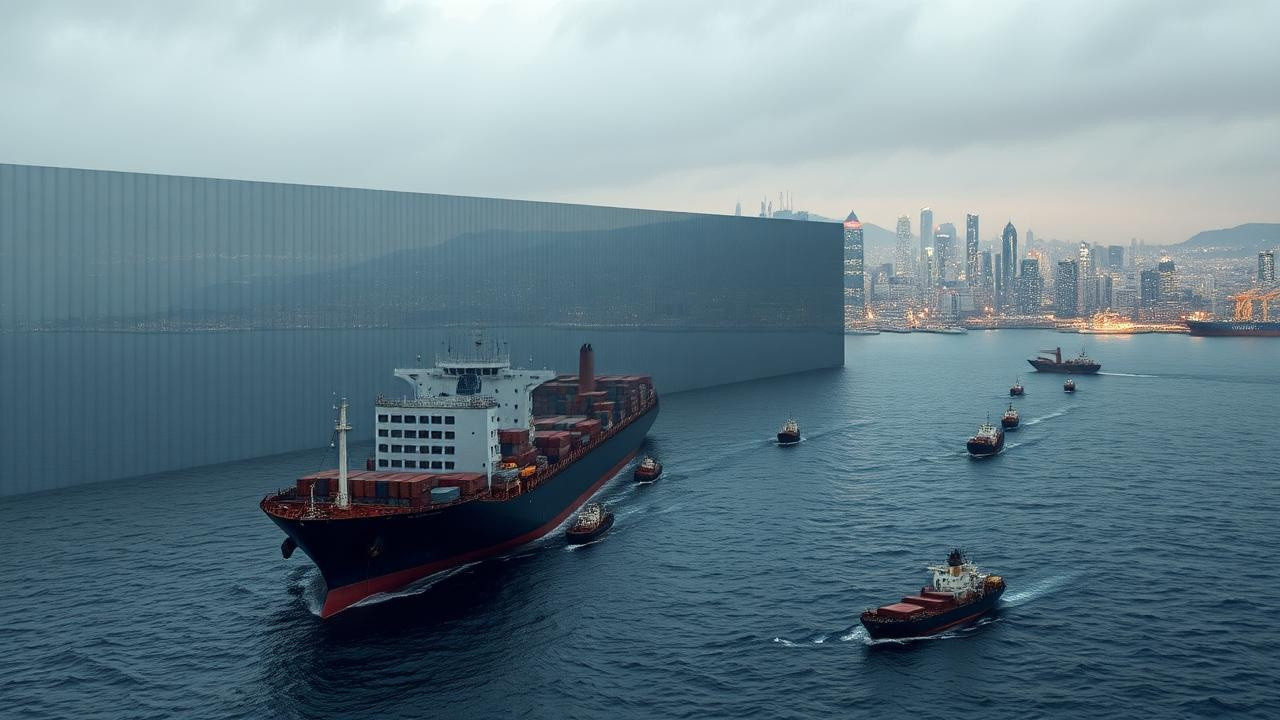The OECD has downgraded its global economic growth predictions due to the escalating trade war spurred by US tariffs. The revised forecast indicates a slowdown to 2.9% for both 2025 and 2026, impacting the US significantly with reduced growth projections and rising inflation. The organization urges countries to seek agreements to avoid further trade fragmentation.
Hold on Tight: The Global Economy’s Taking a Hairpin Turn
Okay, folks, let’s talk about the global economy. Forget the jargon and the spreadsheets for a minute. Think of it like a road trip. We all hopped in the car a while back, fueled up with optimism, and figured we were headed towards smoother roads. Well, the latest forecast from the OECD (basically, the economic weather forecasters for the world’s wealthiest nations) just flashed a warning light: expect turbulence.
Their updated outlook isn’t exactly sunshine and rainbows. They’ve trimmed their global growth projections for both 2025 and 2026 down to a modest 2.9%. Now, 2.9% isn’t a full-blown economic crisis. It’s not a total breakdown on the side of the road. But it is a significant slowdown, and it signals a need to buckle up and prepare for some bumps.
What’s causing this deceleration? The OECD points squarely at the growing tensions in global trade. You know, the back-and-forth tariffs and restrictions between major economic players? Think of it like a squabble in the car – the constant arguing distracts the driver (businesses) and makes it harder to focus on getting to the destination (economic growth).
This isn’t just about numbers. It’s about real-world impacts. It means potentially slower job creation, less investment in new technologies, and a general feeling of uncertainty that can make everyone – from giant corporations to individual consumers – a little more hesitant to spend.
The OECD highlights the impact of these trade spats on global supply chains. Remember how, a few years ago, it became surprisingly difficult to get your hands on things like computer chips or even certain types of furniture? That was largely due to disruptions in the complex network of international trade that we all rely on. The escalating trade war threatens to make these kinds of disruptions more frequent and more severe. It’s like throwing a wrench into the gears of the global machine, slowing everything down.
Now, the OECD isn’t predicting doom and gloom. They’re simply offering a realistic assessment of the challenges ahead. And, frankly, acknowledging the problem is the first step towards addressing it.
What’s interesting is where the growth is expected to be. While the overall picture is somewhat dampened, the United States is still projected to maintain relatively solid growth. This is partially fueled by their massive investments in areas like infrastructure and clean energy. Think of the US as a powerful engine still chugging along, even if the rest of the car is starting to slow down a bit.
On the other hand, Europe is facing a more sluggish outlook. High energy prices (thanks, geopolitical tensions!) and the ongoing war in Ukraine are weighing heavily on the continent’s economy. This is like having a flat tire – it makes progress much more difficult, even if the engine is still running.
Emerging markets, particularly in Asia, are expected to continue to be key drivers of global growth. Countries like India are projected to expand at a faster pace, driven by their growing populations and expanding middle classes. Think of them as extra passengers in the car, adding weight and momentum to the journey.
So, what does all of this mean for you and me? Well, it depends. If you’re a business owner, it means being extra cautious about your investments and preparing for potential disruptions to your supply chains. It might also mean exploring new markets and diversifying your customer base.
If you’re an individual, it means being mindful of your spending and saving habits. This isn’t the time to take on excessive debt or make risky investments. It’s a time to build a financial cushion and prepare for potential economic headwinds.
But let’s not lose sight of the bigger picture. The global economy is a complex and interconnected system. What happens in one part of the world can have ripple effects everywhere else. This is why it’s so important for policymakers to work together to find solutions to these challenges.
The OECD’s forecast is a wake-up call. It’s a reminder that the road to sustainable economic growth is never smooth. There will always be bumps, detours, and unexpected challenges along the way. But by understanding these challenges and preparing for them, we can all help to navigate the road ahead and ensure a smoother ride for everyone. We need collaboration, smart policies, and a dose of realism to keep the global economy on track, even if it means slowing down a bit for the turns. And who knows, maybe a slightly slower pace will allow us to enjoy the scenery a little more along the way.
📬 Stay informed — follow us for more insightful updates!







